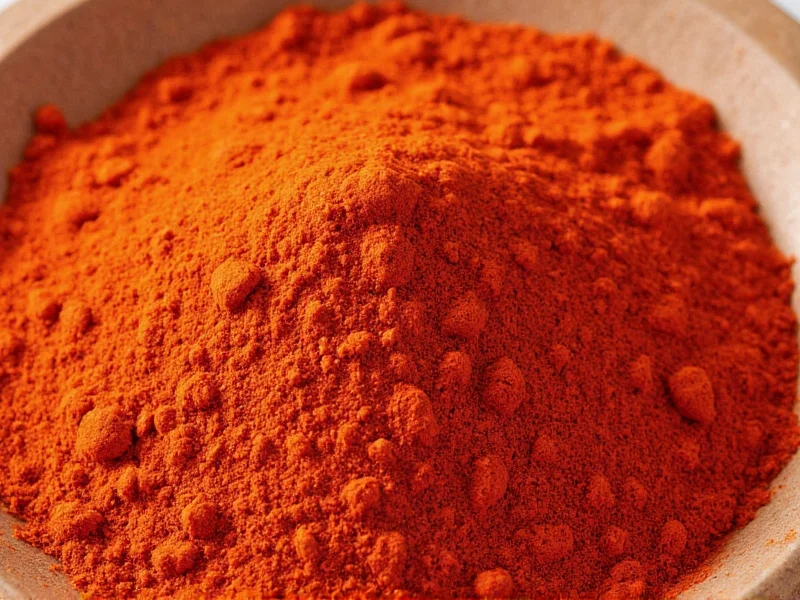Understanding the distinction between sweet paprika and other paprika varieties is essential for home cooks and culinary enthusiasts who want to achieve authentic flavors in their dishes. This comprehensive guide will clarify the differences, explore flavor profiles, and help you select the right type for your recipes.
What Exactly Is Paprika?
Paprika is a spice made from grinding dried peppers belonging to the Capsicum annuum species. Originating in Central America, it was introduced to Europe through trade routes and became particularly prominent in Hungarian cuisine, where it's considered a national treasure. The peppers used for paprika range from sweet to hot varieties, and the final product's flavor depends on which peppers are used and how they're processed.
The Different Types of Paprika Explained
While many consumers think of paprika as a single spice, it actually encompasses several distinct varieties. The confusion often arises because labeling practices vary by region and manufacturer. Here's a breakdown of the main types:
| Type of Paprika | Heat Level (Scoville) | Flavor Profile | Common Uses |
|---|---|---|---|
| Sweet Paprika | 0-100 SHU | Mild, sweet, slightly fruity | Goulash, deviled eggs, potato salad |
| Hot Paprika | 5,000-15,000 SHU | Spicy, pungent, with heat | Spicy stews, chorizo, some Mexican dishes |
| Smoked Paprika (Pimentón) | Varies (sweet or hot) | Smoky, complex, wood-fired flavor | Paella, barbecue rubs, roasted vegetables |
| Hungarian Paprika | Varies by grade | Bright, rich, complex | Traditional Hungarian dishes |
Sweet Paprika vs. Regular Paprika: Clearing Up the Confusion
The primary source of confusion between sweet paprika and paprika stems from regional labeling practices and marketing. In many parts of the world, particularly in the United States, the default paprika sold in supermarkets is sweet paprika. Because it's the most commonly available variety, many people simply refer to it as 'paprika' without specifying 'sweet.'
When a recipe calls for 'paprika' without specification, it typically means sweet paprika, especially in American cookbooks. However, in Hungarian and some European recipes, 'paprika' might refer to a specific regional variety that could be sweet, semi-sweet, or hot depending on the context.
Flavor Profiles and Culinary Applications
Sweet paprika delivers a mild, slightly sweet flavor with subtle fruity notes and no heat. It's prized for its vibrant red color that enhances the visual appeal of dishes without overwhelming other flavors. This makes it ideal for:
- Classic Hungarian goulash and chicken paprikash
- Deviled eggs and potato salads
- Lightly spiced soups and stews
- As a colorful garnish for finished dishes
When people ask about the difference between sweet paprika and paprika, they're often really wondering about sweet versus hot varieties. Regular paprika that isn't specified as sweet usually indicates a hotter variety, though this labeling isn't consistent across all brands.
How to Choose the Right Paprika for Your Recipes
Selecting the appropriate paprika can make or break a dish. Consider these factors when choosing between sweet paprika and other varieties:
Recipe Origin Matters
Authentic Hungarian recipes typically use specific grades of Hungarian paprika, which come in various heat levels. Spanish recipes often call for smoked paprika (pimentón), while American recipes usually intend sweet paprika when they simply say 'paprika.'
Color Indicators
Bright red paprika is typically sweet, while darker, more brick-red varieties may be smoked. Deep mahogany colors often indicate hot paprika. The vibrancy of color also indicates freshness, as paprika loses its rich hue over time.
Reading Labels Carefully
Always check for specific descriptors on the label. Terms like 'dulce' (Spanish for sweet), 'édesnemes' (Hungarian for noble sweet), or 'félédes' (semi-sweet) provide clear indications of the variety. If a label simply says 'paprika' without specification, it's most likely sweet paprika in the American market.
Substitution Guide: When You Don't Have the Right Type
Understanding what is the difference between sweet paprika and paprika becomes particularly important when substitutions are necessary. Here's how to handle common substitution scenarios:
- Sweet for hot paprika: Use half the amount of sweet paprika and add a pinch of cayenne pepper to achieve similar heat levels
- Hot for sweet paprika: Omit entirely or use a very small amount, as the heat will dominate your dish
- Smoked for sweet paprika: Use half the amount, as the smoky flavor can overwhelm delicate dishes
- Sweet paprika for smoked: Add a few drops of liquid smoke to approximate the flavor
Remember that paprika contributes both flavor and color to dishes, so substitutions may affect the visual presentation as well as the taste.
Storage Tips for Maximum Freshness
Paprika has a relatively short shelf life compared to other spices. To preserve its vibrant color and flavor:
- Store in an airtight container away from light and heat
- Keep in a cool, dark cupboard (not above the stove)
- For extended storage, keep in the refrigerator or freezer
- Replace every 6-12 months for optimal flavor (it doesn't spoil but loses potency)
Fresh paprika should have a vibrant red color and a sweet, slightly peppery aroma. If it looks dull or has little scent, it's past its prime and won't deliver the flavor impact your recipes require.
Why the Distinction Matters in Cooking
Understanding what is the difference between sweet paprika and paprika isn't just academic—it directly impacts your cooking results. Using hot paprika when a recipe calls for sweet can completely alter the flavor profile of delicate dishes like deviled eggs or potato salad. Conversely, using sweet paprika in a recipe that requires heat will result in a dish lacking the intended spicy dimension.
Professional chefs emphasize that proper spice selection is as important as ingredient quality. As one culinary instructor explains: 'The difference between sweet paprika and other varieties isn't just about heat—it's about the entire flavor architecture of your dish. Sweet paprika provides color and subtle sweetness that balances other flavors, while hot varieties add dimension through controlled heat.'











 浙公网安备
33010002000092号
浙公网安备
33010002000092号 浙B2-20120091-4
浙B2-20120091-4